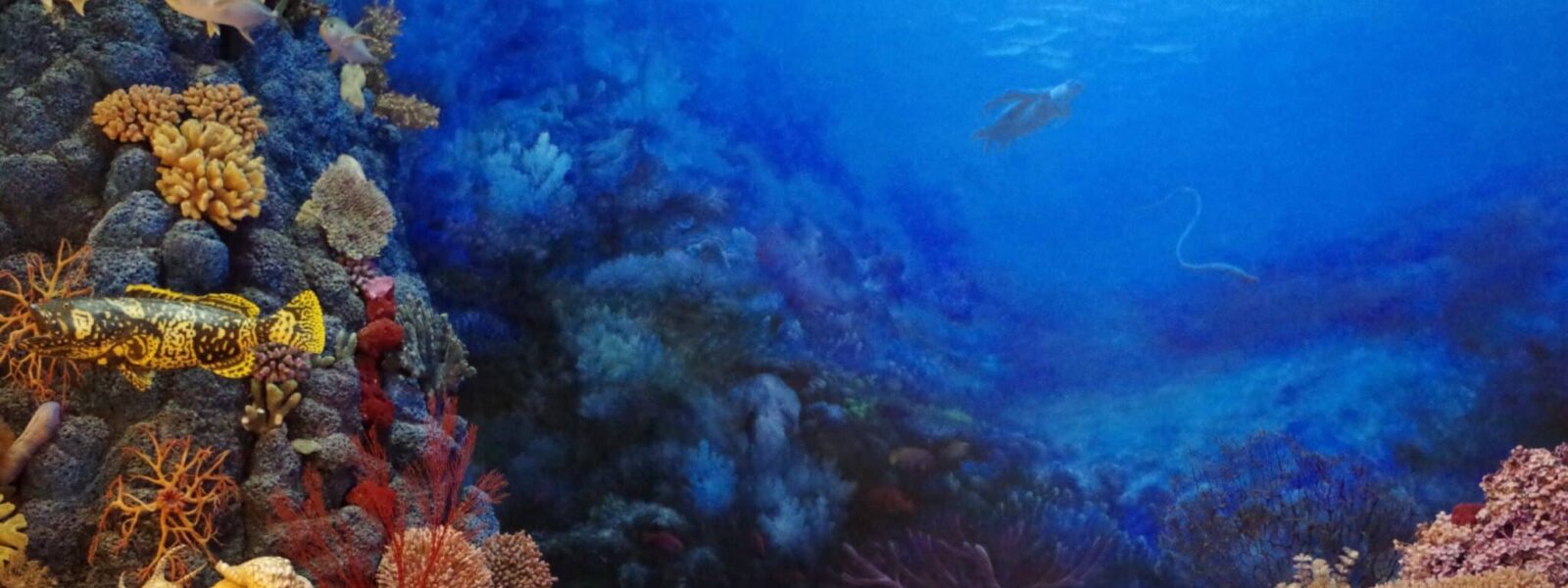Miraculous Red Sea corals that are resisting climate change
Romain Savary, a biologist specialising in symbiosis at the École Polytechnique Fédérale de Lausanne (EPFL), recently published a study in the prestigious journal PNAS1, on the corals of the Red Sea. He explores the genetic mechanisms that give them the exceptional ability of resistance to climate change, at a time when many reefs are under threat around the world.
Why did you become interested in the corals of the Red Sea?
Since 2014, the scientific community has discovered that corals in the northern Red Sea are resistant to climate change and, in particular, to rising water temperatures. As a result, Aqaba Bay, near Eilat in Israel, has been dubbed a “thermal refuge”.
It is important to know that corals do not generally tolerate temperature changes. This is what the American Oceanic Institute has shown: beyond a certain temperature variation, corals ‘bleach’. That is to say that the symbiosis between the coral and the algae within them breaks down, leading to the latter being expelled. Without its algae, the coral is unable to access certain essential nutrients, so it dies. But the corals in Aqaba Bay can survive in much warmer water than science predicts.
All corals have a margin of tolerance, an acceptable difference between their life temperature and the temperature beyond which they bleach. This tolerance is estimated at 1°C. For the corals of the northern Red Sea that we studied, which belong to the Stylophora pistillata – a species considered elsewhere to be particularly vulnerable to climate change – this gap is much larger. They can withstand a 5°C rise in water temperature. Hence, while their average temperature is 27°C, these corals survive up to 32°C. This is unheard of!
The Red Sea is an open-air experiment for corals. The further south you go, the warmer the water temperature becomes. It is as if the southern part of the sea allows us to see in advance what is going to happen in the north.
It is thought that the corals of Eilat inherited this resistance during a dry spell in its ancient past. The northern corals must have died, and when the southern corals gradually colonised the area, as the water rose, they must have diffused their thermal resilience, according to the bottleneck principle.
It is as if the south of the sea can show in advance what will happen in the north.
By studying their genetics, what did you discover?
We didn’t just study their genetics, we also analysed the genetics of their symbiotic algae and associated bacteria, i.e., their microbiome. With these three elements, we considered the whole holobiont [an environmental science concept that describes the ensemble formed by a host and all the species living in its ecological niche].
When we raise the temperature of the water in which these corals and their holobiont are living, we observe a rapid change in gene expression. It is not the sequence of the genes that adapts to the change in temperature but their expression profile, that is to say the type and quantity of proteins produced, which transforms the biological machinery.
We tested two situations. In the first, the heat stress is rapid, the temperature rise lasts three hours and the holobiont returns to a normal expression level very quickly if we do not exceed 32°C. In the second configuration, we imposed a long heat stress of 12 days. Again, two days after returning to a temperature of 27°C, gene expression returned to normal. So, regardless of the duration of the stress, the temperature limit is sufficient to predict the survival of these corals.
And these changes concern both the coral genomes, the algal genomes and those of the associated bacteria. Above 32°C, the composition of bacteria (of which there are ~8,000 types) changes. It is still unknown what mechanisms organise these changes.
If we look in more detail at the changes in gene expression, our study also shows that all genes perturbed by heat stress return to normal after a recovery time. The resilience of coral gene expression is rapid. It is possible that the resistance mechanisms vary between long and fast stress, but the result is the same.
Can we then expect this reef to be safe?
It is true that no climate change scenario predicts that the temperature of the northern Red Sea will exceed 32°C. But we must also be aware that other factors influence the resistance of corals, such as pollution. It is thought that the symbiosis with the algae is affected by an imbalance of nutrients in the environment. Thus, pollution can lead to the ejection of the symbiotic alga and bleaching. High concentrations of nitrate in the water, linked to intensive agriculture, or the proliferation of algae on the coast, also affect the health of the corals.
If we want to keep this reef as a stock of corals to help recolonise reefs that have suffered from climate change, we must preserve this area. This is the purpose of the Transnational Red Sea Research Center that Anders Meibom, the director of my laboratory at the Swiss Federal Institute of Technology in Lausanne, has created. It aims at facilitating the diplomatic commitment necessary for this research around the Red Sea.
Could these corals in principle be used to repopulate dead reefs?
These reefs in the northern Red Sea, Gulf of Aqaba, are indeed a very good hope for the future of coral reefs because they may be the last survivors of this ecosystem if global warming is not controlled in the short term. It is therefore necessary to protect the reefs of this region against other more local threats such as pollution or mechanical destruction due to tourism.
Once protected, they will constitute an important stock for a natural repopulation of the areas where the reefs will have disappeared. But this will only be possible if environmental conditions improve.
A manual repopulation of distant reefs with these corals by man would be a waste of time and a huge undertaking. Primarily because corals, although very resistant to temperature and other variables of their environment, the Red Sea has other characteristics that make these corals survive very well in its waters.
It would be wrong to think that we could replant the Great Barrier Reef with Red Sea corals, because they might not be adapted for other reasons. Moreover, the number of corals in the world that would have to be replanted would correspond to several billion invidivals, an unrealistic undertaking that must be left to nature. Only a more local repopulation in the Red Sea would seem more realistic.
In conclusion, these corals represent a hope for the future, with at least one living coral reef by the end of the century that will constitute a natural stock for repopulation.














